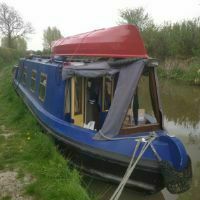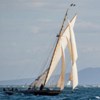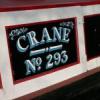

springy
Member-
Posts
847 -
Joined
-
Last visited
Profile Information
-
Gender
Male
-
Location
West Midlands
Recent Profile Visitors
10,525 profile views
springy's Achievements
Rising Star (8/12)
106
Reputation
-
springy started following Historic Boats for sale online , Roses and Castle Bull , How fast did flyboats go? and 7 others
-
Just seen this on BBC Midlands Today - the Birmingham BULLSINTHECITY includes one decorated with Roses and Dudley Castle https://bullsinthecity.co.uk/sculptures/bill-bull-barge/ springy
-
- 3
-

-
Some years ago I helped bring Gifford up Wolverhampton 21 horse drawn, I was somewhat surprised how fast it came out of the chambers compared with a motor. AIUI all of the FMC steamers worked "fly", and somewhere on the web I have seen letters from various canal owning companies to FMC complaining about the behaviour and speed of the steamers (though I can't find it at the moment). springy
-
Certainly looks like a FoMoCo carb to me but I think it is a crossflow, which would tally with 1975 (by then we were up to the Mk 3 cortina) - pre crossflow the inlet manifold and carb was directly above the exhaust manifold, on the crossflow engine the manifolds are on opposite sides of the head. ISTR the pre crossflow engines had Solex carburettors springy
-
Be aware that the TV may require a regulated 12v supply, the alternator, battery charger or solar may push the voltage up to over 14v. Worth checking. springy
-

Toxic chemical spill in Walsall Canal
springy replied to tree monkey's topic in Waterways News & Press
Yo cor wesh yer onds in a buffalo -
True ish - The Gardner 4VT as fitted to the Cowburn and Cowpar motors in the mid 30s used "Pump Stroke" governing, first produced in 1913, as did the Bolinder W series engines. Bolinder also continued to use "Hit and Miss" governing on the E type (1908) NE and BM series favoured by FMC, Thomas Clayton and others. springy
-
On the contrary, I suspect even now there are still more single cylinder hot bulbs than the later full diesel bolinders in narrowboats, they also have a distinctive uneven beat due to the use of a "Hit and Miss" governor - when working hard they will hit every beat but on lower loads they will hit one miss two, hit one miss three hit two miss three etc. - you never can tell when you will get a firing stroke. Many have however replaced the sievert paraffin blowlamp with a gas burner. springy
-
The conical lower half suggests some sort of powder storage - cement silo ? springy
-
I was at the Moira Furnace gathering yesterday and there were quite a few Wilderness boats amongst the attendees, along with their trailers, I chatted briefly with a few of the owners and they seemed a friendly bunch - look out for a gathering for trailable boats and just turn up. Whilst they might not be able to point you to an "available" trailer, you might be able to borrow one to get your move done. springy
-
UK and EU regulators ARE different - UK Propane 37mB, UK Butane 28mB, EU 30mB for both, (UK natural gas 20-23mB). I don't know what effect this would have on the flame, this site suggests the flame would be weaker if switching from a UK to EU regulator and gives some jet sizes. https://forums.ybw.com/threads/switching-to-euro-gas-regulators.293736/ springy
-
Just realised from the info linked by Stroudwater 1 that this building was (in the late 70s) the Opposite Lock nightclub (nothing to do with canal locks - the owner was a car rally enthusiast) and later became Bobby Browns nightclub. springy
-
No, apparently the council hasn't considered it yet. The news article was more about the BCNS reaction. https://www.bbc.co.uk/news/articles/czxyv4x4p51o beaten to it by stroudwater1 springy
-
Could be tricky, IIRC Bernard's return from the pelsall rally to bclm a couple of years back with 4 joeys behind included about 14 hours of weedhatch time (35" prop). springy
-
Having spent a lot of time on the BCN, I've had quite a variety of things - Worst - mattress springs on the Tame Valley - 2 1/2 hrs cutting down the weed hatch and pulling with a cabin shaft from the bank with the assistance of a couple of BW operatives (back in the good old days), spring steel is hard. Weirdest - on the walsall - initial investigations felt like cloth but when I started cutting at it (with a stanley knife attached to a length of string) it got bigger - turned out to be a large piece of foam wrapped tightly. Bed sheets are quite tough when twisted, and a lorry inner tube, amongst many other things. Not really a "prop foul" but on the northern stratford I was stopped dead at kings norton swing bridge (no 2) narrows, a metal tube had lodged between the skeg and the shaft, finally freed with the assistance of a "non passing" boat (I was blocking the narrows) who towed me backwards off the offending tube which we recovered with a grappling hook and turned out to be a "heras" type temporary fence panel. Fortunately apart from minor dings to the prop, no major damage was caused in any of these events. springy
-
Reading the description in the link - they are not "flank drive" but a female equivalent of an "easy out" stud extractor, the inside of the socket has a tapering spiral which bites into the rounded nut, in larger sizes also useful for removing "security" wheel nuts without the "key" adaptor. (I recognise it because I have a single one in my toolbox, don't remember where it came from, never actually used it.) springy





